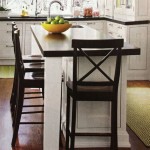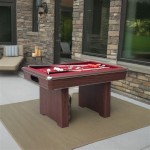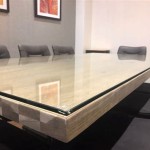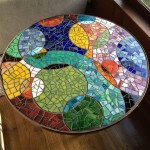Side Table Standard Size: A Comprehensive Guide
Side tables are ubiquitous pieces of furniture found in almost every home. They serve a variety of functions, from providing a convenient surface to place drinks and lamps to offering storage solutions for books and remote controls. While side tables come in a wide array of styles, materials, and sizes, understanding the standard dimensions can be helpful when selecting the right table for a particular space and purpose. This article explores the typical size ranges for side tables, factors influencing these dimensions, and considerations for ensuring a harmonious fit within a room's overall design.
Understanding Standard Side Table Heights
Height is arguably the most critical dimension when considering a side table. The primary function of a side table is often to provide a surface at a convenient height for reaching items from a seated position. Therefore, its height is closely related to the height of the adjacent seating, whether it be a sofa, armchair, or bed. Generally, a side table should be approximately the same height as the arm of the adjacent chair or the top of the mattress. This allows for easy access to items without requiring excessive reaching or bending.
The typical height range for a standard side table is between 20 and 30 inches (51 to 76 centimeters). This range accommodates most standard sofas and armchairs, which typically have arm heights between 24 and 28 inches. For use beside a bed as a nightstand, the side table should ideally be level with the top of the mattress, or slightly higher. This ensures that items like reading glasses, phones, or a glass of water are easily accessible without straining.
Variations in seating height are common, so it is essential to measure the height of the intended seating before purchasing a side table. If the seating is particularly low, a side table towards the lower end of the standard range (20-24 inches) may be more appropriate. Conversely, for taller seating, a side table closer to 30 inches may be necessary. In situations where a single side table is intended to serve multiple seating areas with varying heights, opting for a height that strikes a balance between the lowest and highest seating is often the best compromise.
Exploring Standard Side Table Widths and Depths
While height is determined by the adjacent seating, width and depth are more closely related to the available space and the intended function of the side table. A wider and deeper side table offers more surface area for placing multiple items, while a narrower and shallower table is more suitable for smaller spaces or when a minimalist aesthetic is desired.
The standard width and depth for side tables typically fall within the range of 16 to 22 inches (41 to 56 centimeters). This range allows for sufficient surface area to accommodate a lamp, a book, and a drink without overwhelming the surrounding space. However, variations exist, with some side tables being significantly smaller or larger depending on their design and intended use.
For smaller spaces, such as apartments or bedrooms with limited floor space, a narrow side table with a width and depth of 12 to 16 inches may be more practical. These compact tables can still provide a useful surface without encroaching on the surrounding area. Conversely, in larger rooms, a wider side table closer to 24 inches or more can provide a more substantial presence and offer ample surface area for multiple items or decorative accessories.
The shape of the side table also influences the perceived size and functionality. Square or rectangular side tables often provide more usable surface area compared to round or oval tables of the same dimensions. However, round or oval tables can be more visually appealing and can soften the lines of a room. Ultimately, the choice of shape depends on personal preference and the overall design aesthetic.
Factors Influencing Side Table Dimensions
Several factors influence the ideal dimensions for a side table, including the room's size, the style of the furniture, and the intended use of the table. Understanding these factors can help in selecting a side table that is both functional and aesthetically pleasing.
The size of the room is a primary consideration. In smaller rooms, larger side tables can make the space feel cramped and cluttered. In contrast, smaller side tables in a large room may appear insignificant and out of proportion. Aim for a balance between the size of the side table and the overall dimensions of the room to create a harmonious and balanced space.
The style of the furniture and the overall design aesthetic of the room also play a significant role. Modern and minimalist interiors often benefit from side tables with clean lines and simple shapes, while more traditional or ornate interiors may call for side tables with more elaborate detailing and embellishments. The height, width, and depth of the side table should complement the other furniture in the room and contribute to the overall design theme.
The intended use of the side table is another important factor to consider. If the table is primarily intended for holding a lamp and a drink, a smaller surface area may suffice. However, if the table is also intended for storage, a larger surface area and additional features such as drawers or shelves may be necessary. Consider the specific items that will be placed on or stored in the side table and choose a size that can comfortably accommodate them.
Storage capacity is often a key consideration. Side tables with drawers or shelves offer additional functionality and can help to keep clutter at bay. The dimensions of these storage compartments should be carefully considered based on the items that will be stored within them. For example, if the side table is intended for storing books, the shelves should be deep enough to accommodate the size of the books. Similarly, if the side table is intended for storing remote controls, the drawers should be appropriately sized to prevent them from getting lost or damaged.
Material thickness can also slightly alter the overall dimensions. A side table constructed with thicker materials may appear more substantial and sturdy, while a side table constructed with thinner materials may appear more delicate and lightweight. The choice of material thickness depends on the desired aesthetic and the intended use of the side table. Thicker materials are generally more durable and can withstand more weight, while thinner materials are often more affordable and can be used to create a more streamlined and minimalist look.
Finally, accessibility is paramount. Ensure that the placement of the side table allows for easy movement around the room and does not obstruct any doorways or pathways. The side table should be positioned within easy reach of the adjacent seating, allowing for comfortable access to items placed on or stored within it. Consider the ergonomics of the space and prioritize functionality and ease of use when selecting the size and placement of the side table.
In conclusion, while standard side table sizes offer a helpful guideline, the ideal dimensions ultimately depend on a variety of factors specific to the room, furniture, and intended use. By carefully considering these factors and measuring the surrounding area, one can select a side table that is both functional and aesthetically pleasing, contributing to a comfortable and well-designed living space.

Nill Fremont Nightstand Oak Walnut Furniture

What Is Side Table Dimensions Free Dwg Layakarchitect

Bedside Tables Types And Measurements Side Bedroom Table Dimensions Night Stands

Ellis Solid Wood Bedside Table Sheesham Fabuliv

Height Of A Sofa Table Ashley Furniture Home Office Check More At Http Www Nikkitsfun Com

Angel Furniture Solid Sheesham Wood Classic Coffee Table Standard Honeyfinish

Low Wooden Coffee Table Ekbote Furniture Ekbotes Logs And Lumbers Pvt Ltd

Standard End Table Dimensions With Drawings Upgradedhome Com

Console Table Caretta Workspace

Bristol Solid Wood Side Table Bedroom Furniture Sg Singapore Bedandbasics
Related Posts








